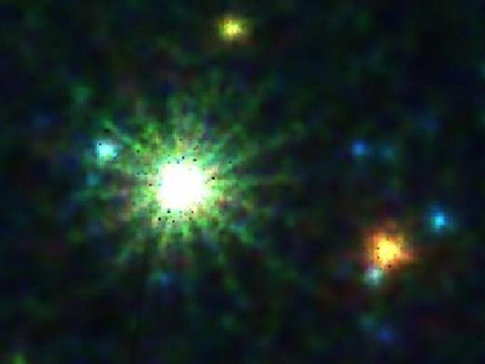Using observations from ESO’s Very Large Telescope, astronomers were able for the first time to reconstruct the site of a flare on a solar-like star located 150 light-years away. The study of this young star, nicknamed “Speedy Mic” because of its fast rotation, will help scientists better understand the youth of our Sun.
The astronomers observed the star BO Microscopii during two consecutive nights in October 2006, simultaneously with the UVES spectrograph on ESO’s VLT and ESA’s XMM-Newton X-ray satellite.
Using a technique called “Doppler imaging,” the astronomers reconstructed images of the surface of the star, detecting the presence of several spots. A few are near the visible pole, while most spots are asymmetrically distributed at mid-latitudes.
The X-ray observations indeed identified several flares, which are sudden and vast releases of energy. For one of them, the astronomers could pinpoint its origin on the surface of the star. The flare, lasting about 4 hours, was 100 times more energetic than a large solar flare and considerably larger than solar coronal loops.
The surprising finding, the team says, was the location of the flare. Contrary to our Sun, the site of the observed flare does not correspond to the detected spots.
“Interestingly, the flare occurs on a rather inconspicuous portion of the star’s surface, away from the main concentration of activity in terms of dark spots,” explains Wolter.
Speedy Mic is a very young star. With an age of only about 30 million years, it is roughly 150 times younger than the Sun.
“It is very likely that our young Sun was such a fast rotator as well,” says Wolter. “Studying Speedy Mic is thus like observing our own host star while still in its infancy and so, better understand how the eruptions on the young Sun affected the planets. These studies may also contribute to the understanding of current solar eruptions which can cause havoc in our telecommunications and power distributions.”











